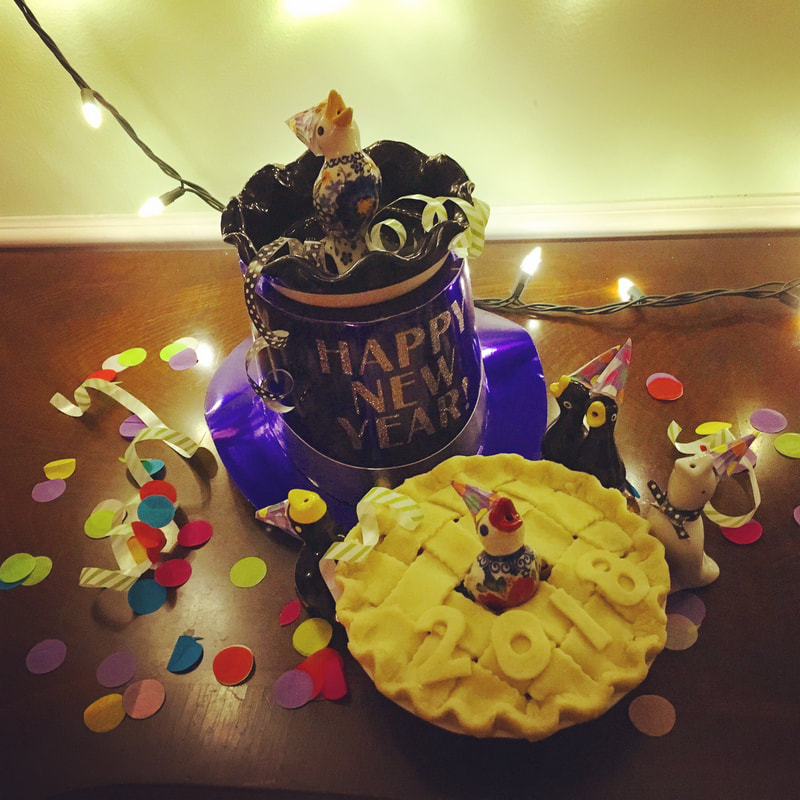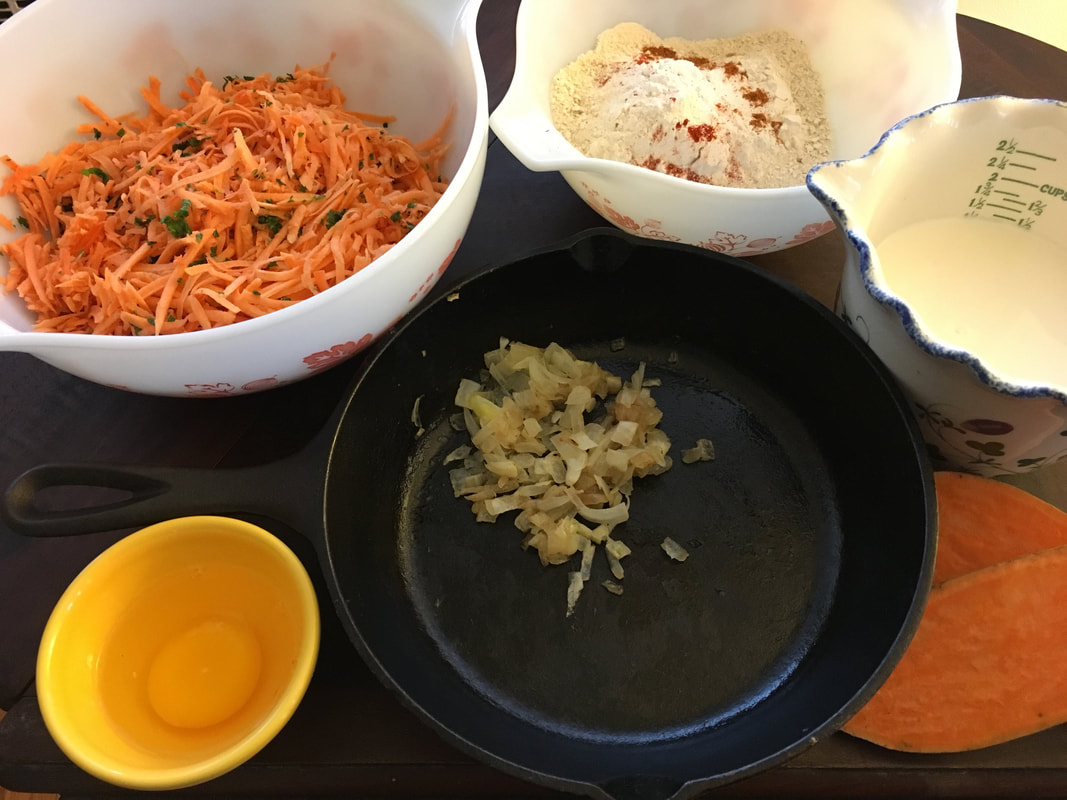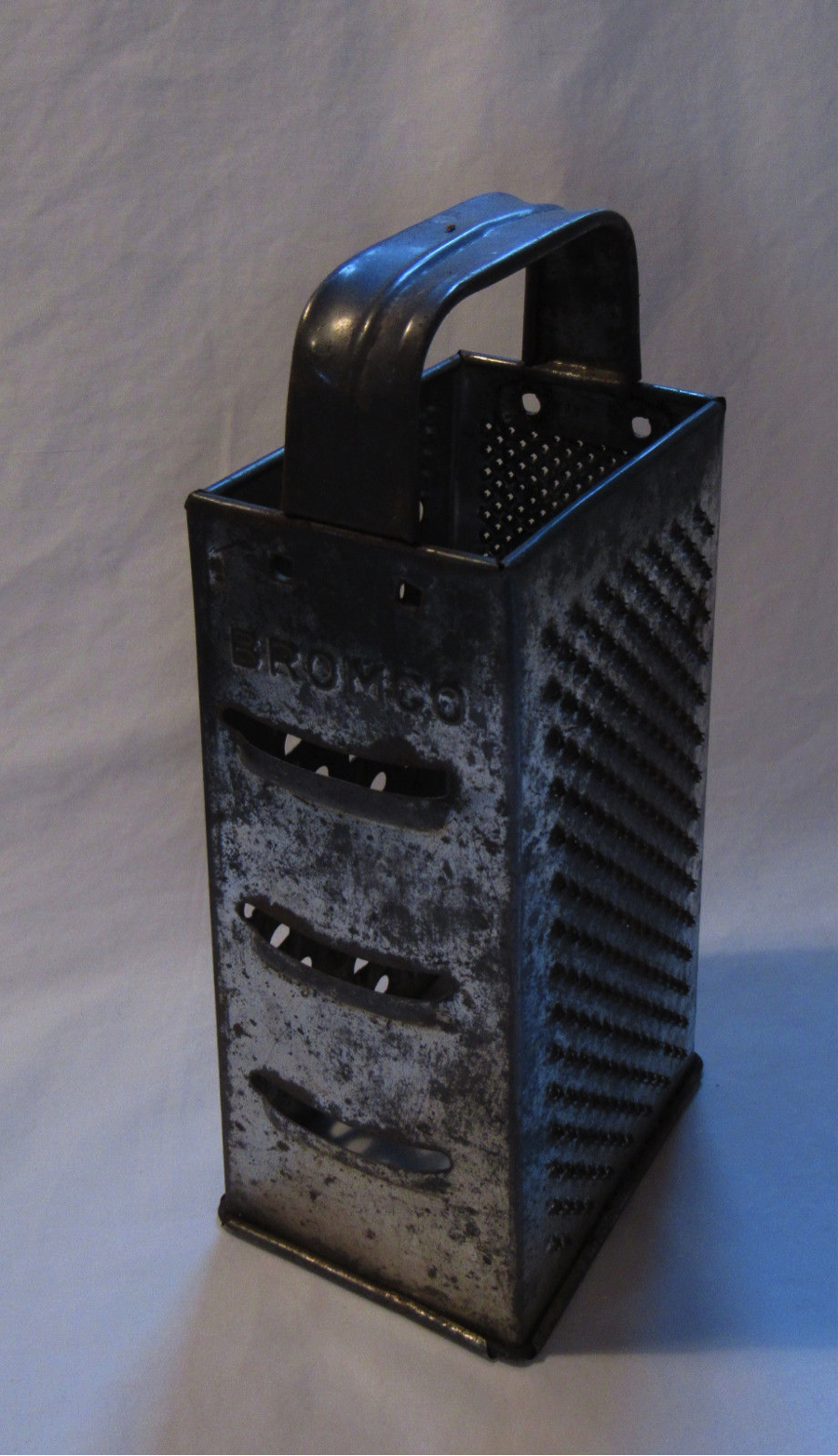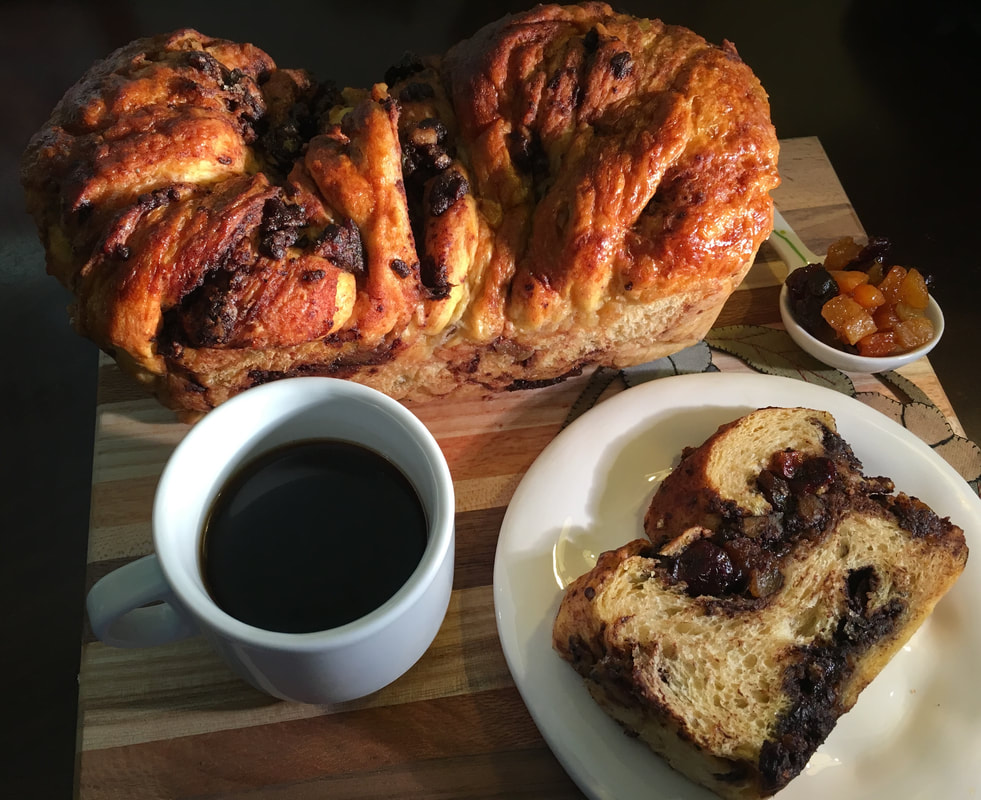|
Anyone tethered to a social media feed knows that the once humble pie has evolved into an art form within our popular culture. Long before the maiden flight of four and twenty black birds from the confines of a double-crusted pastry, pie has provided both sustenance and entertainment. Throughout history, images of sweet and savory pies remind us that pie has always provided the baker with a blank pastry canvas clamoring for expression. In the event I ever become sidetracked by a little something called Life, instagram is there to remind me on a daily (if not hourly) basis that I should #upmyholidaypiegame. This does not mean a woven lattice, or a three-stranded braid, or a casual fruit appliqué. Ditto for a heartfelt but simplistic birthday or holiday greeting fashioned out of run-of-the-mill alphabet cutters. So long, simple crimp and paring knife steam vents. Hello, Pie Art.
Although Pie Art is nothing new, as December 31st slinks in, year in review postings remind me of the dazzling creations by bakers from all over the world. I would be remiss in not applauding the extraordinary work of gifted artists who constantly amaze and inspire, creating intricate designs from everyday pie dough. (I’m looking at you jojoromancer, batterednbaked, thepieous, piesandprejudicebaker, to name just a few.) Having enjoyed taking a turn at this art form, I can assure you, the end result seldom indicates how painstaking it is to execute these pie works with precision. They also remind me how very far we have strayed from humble pie. Today, rolling pins contribute mere pastry locomotion. Once beloved pie birds have had their wings clipped, their feathers ruffled. A classic double crust pie is old school. Top crusts are now as magnificent and exacting as intricate portraitures, as detailed as any slide projected during an art history exam. Inching their way across flour-dusted countertops are fine bladed matte knives and razor sharp aspic cutters. Pate brisée has become the medium that serves as both canvas and appliqué. We cut and chill, egg wash and apply, holding our breath as the pie bakes to see if the ‘after’ sufficiently resembles the ‘before.’ What did we do before #pieart and #imsomartha? We were #notsomartha. We were colonists who tucked savory fillings between two crusts as a way of preserving food during long winters. We were farmers overrun with bumper crops or thrifty bakers forced to improvise using cupboard staples during lean months. We were clever enough and crafty enough to rummage through kitchen drawers, embellishing the edges of piecrusts using everyday forks, spoons, and pie wheels. We vented pies allowing steam to escape using funnels or ceramic birds. Sometimes we re-rolled scraps of pie dough and hand-cut seasonal decorations as a way of jazzing up a dowdy crust. We relied on egg wash and sugar to provide a little shine, a hint of sparkle. Today we flock like pie birds, fixated on the artistry. I struggle to understand how a fruit filling that stretches across a nine-inch pie plate can juggle both the beauty and the bake. Pies need sufficient oven time, allowing fruits to thicken and bubble. I focus on the filling but at a cost; the perfection that is captured through the lens of so many artist/bakers often eludes me. The pie artistry flooding social media is an integral part of today’s popular culture. The truth is that no matter how often I am reminded to up my pie game, I will continue to focus on the integrity of the pie as a whole. When you make peace with the fact that you are #sonotmartha, you can worry about other things. You can worry about how the pie will taste, or if you have crafted a pie with the appropriate ratio of fruit to crust. You can focus on the drama of the pie as you retrieve it bubbling hot out of the oven, the center and the edges seemingly breathing. Dangerously juggling the hot pie, inundated with the unmistakable fragrance of fruit and butter, you realize it’s more important to avoid burning yourself than reaching for your camera. Which is why some of us will never #bemartha.
3 Comments
Life is hilarious, an absolute scream. No time is this more evident than the Tuesday before Christmas while waiting in line at the post office, clutching a corrugated box addressed to your brother.
Equally side-splitting is spending hours in the emergency room watching your phone flat line to zero charge while doctors ponder the source of Mr. Sweet As Pie’s flulike symptoms. Fortunately, I had the extreme good luck to be seated next to a feisty elderly woman with moderate heart palpitation issues. “I probably should have come to the ER last night,” she confided in me. “But I didn’t want to miss Survivor.” It seems to me that heart palpitations might cause one to be permanently voted off the island of Real Life. Instead I nodded and smiled, nudging the apple phone with my name on it as it gulped charge from the communal charging station. All of this has to happen smack dab in the middle of a week overrun with reindeers, gingerbread, and peppermint. Christmas is a cookie holiday but pie does not get a pass; there are plenty of revelers desperately seeking apples and chocolate and pecans. This is not my favorite holiday; I feel the undertoad of butter and sugar pulling me in conflicting directions, forcing me to divide my loyalties between pie plates, fluted pans, and tube pans. I remind myself that in the grand scheme of the third week of December, these are tartlet-sized problems. What capped off the week with more hilarity than a bouffant application of meringue to lemon curd was the chilling realization at 10:00pm Thursday evening that my house was totally devoid of heat. The black tights that my sister threatened to toss in the Good Will bag because ‘they couldn’t possibly spark joy,’ proved critical. Layered beneath flannel-lined L.L. Bean jeans that really fit more like dungarees, I was as warm as a thick slice of bread hunkered down between the grates of an unplugged Panini press. As frigid Thursday rolled into the Christmas countdown, there were a few glimpses of sunshine in the forecast. One came in the form of sweet citrus plucked from the shelves of Trader Joe’s. The other bright newsflash was learning that the varicella virus that causes childhood chickenpox had found safe haven in Mr. Sweet As Pie. Apparently, the time was ripe for the long dormant virus to host a Shingles party. I am frantically penning both email and text message to Mrs. and Mr. Claus and and cc-ing the elves to let them know under no circumstances are they to bring me Shingles for Christmas. You know what they say about life and lemons. Seems a little chilly for lemonade but just about the right time to crank up the oven and bake something citrus. There are as many variations on a Hanukkah latke as there are takes on a Christmas cookie. We are holiday celebrants of habit, turning to recipes that are often comfortably reminiscent of childhood. In some instances, there wasn’t a written recipe, but more of a ritual.
My earliest potato pancake memory features an imposing metal 4-sided box grater boasting the name Bromco. The four sides offered specific options, made possible by the mere manual rotation of the grater. On one side, directly below the brand name, a trio of lethal horizontal openings begged for anything needing slicing, hungrily waiting for an unsuspecting knuckle to cross its path. Minuscule holes on one side were perfect for zesting fragrant lemons and oranges or grating a wedge of hard cheese into a pyramid of fluff. Tear-provoking onions and finely shredded carrots fared better with holes about ⅛” wide, while offering just the right amount of danger to an exposed fingertip. The ¼” holes were ideal for coarsely shredding cheeses and vegetables while providing plenty of opportunities for calamitous injury. Although the Bromco box grater shared cabinet space with the Chop-O-Matic, the two kitchen tools were totally independent with little crossover. Having experienced repeated run-ins with the box grater, I felt slightly safer using the Chop-O-Matic, its blades safely ensconced within plastic. According to Jessie however, the Chop-O-Matic had no place in potato pancake-ing. The exposed grating holes on the Bromco seemed to elude Jessie’s fingers as she grated onions and potatoes without sustaining injury. My brush with the box grater almost always ended with the need for a cotton ball doused with the popular antiseptic ST-37 and a band-aid. My mentor was sympathetic, but quick to point out that I needed to devote all of my attention to the task at hand and not WABC’s 4:30 movie scrolling across the tv screen. Potato pancakes seemed to require mountains of potatoes and more onions than I was capable of grating. There was also a curious need for a bowl of cold water to prevent the potatoes from discoloring. I never understood the alchemy of this step, the potatoes taking a quick cold swim followed by a thorough kitchen towel squeeze. I was much better suited to plugging in the West-Bend electric frying pan and combing through the kitchen cabinet for the blue box of Streit’s matzoh meal. I always wondered how Jessie knew how many potatoes and how many onions, and what about the eggs and the matzoh meal? Nothing was written down that I could see and the addition of matzoh meal was more of a generous shake from the Streit’s blue box than an actual measurement. “Not too much,” Jessie would say, “just enough to hold it together.” The potato mixture was then dropped into the West-bend’s sizzling oil bath, eventually bobbing to the surface, the edges of the pancakes deeply golden, a few onion stragglers teetering on burnt. A veil of oil drifted beyond the swinging kitchen door, hovering over the dining room table. Long after the dinner plates had been cleared, and the Hanukkah lights nothing more than puddles of wax, the air was still thick with a tangle of frying oil, sweet onions, and candles. Many years later, the proud recipient of a new, but small food processor, I watched in horror as shreds of freshly grated potatoes turned from starchy white to unappetizing gray. The flashback to an oversized Pyrex bowl filled with cold water and a clean kitchen towel was as sharp a reminder as any four-sided Bromco box grater. The West-Bend electric frying pan has long extinguished its flame, but I still keep a box grater on hand in the event my food processor goes on strike or is recalled by Cuisinart. It is unclear when I made the crossover from white to sweet in my potato pancakes. I can see Jessie shaking her head, wondering who invited sweet potatoes to elbow their way into a traditional Hanukkah side dish. She would be happy to know however, that even though I measure out the matzoh meal from the blue box, I always add just the slightest little shake to hold it all together. In December, the butter team becomes its own holiday snow globe, trapped in a bubble of sugar cookies and royal icing. Within that snow globe, there is a division; the Cindy Lou Whos, joyful and merry, and the Grinch, a little less so. It has been brought to my attention that I fall into the latter category. I also find joy in a non-traditional shade of green.
How the Grinch Stole Christmas first aired on December 18, 1966. The Grinch however, first appeared in the short story, The Hoobub and the Grinch, written by Theodor Geisel, originally published in Redbook magazine in 1955. The story tells of a yellow, not green, character named the Grinch who tricks the Hoobub into buying a piece of green string. Even in his infancy the Grinch was a conman, convincing the Hoobub that the string was worth more than the sun. Many years later, Dr. Seuss (Geisel) teamed up with animator Chuck Jones to create 26 minutes of television entertainment that is as firmly entrenched in our holiday psyche as mistletoe and peppermint sticks. Geisel and Jones had previously worked together on WW II training films, most notably Private Snafu. Although Geisel was passionately “anti-Hollywood,” he trusted and respected Jones’ work. The television special was dependent on the financial backing of a sponsor, and finally secured one in the Foundation for Commercial Banks. This was an ironic pairing, taking into account the anti-consumerist message of Geisel’s story. The holiday program cost over $300,000 to produce, a figure that was considered astronomical at the time and far more than A Charlie Brown Christmas, budgeted at $96,000. Boris Karloff narrated the special, but the signature song, "You're a Mean One, Mr. Grinch" was sung by Thurl Ravenscroft, famous for voicing Kellogg's Tony the Tiger. Ravenscroft received little recognition for his contribution to the animated feature, an oversight that Geisel attempted to remedy by reaching out to newspaper and magazine columnists, asking them to credit Ravenscroft for his participation. Today most audiences still believe Karloff was responsible for both narration and song. Geisel's original story of the Grinch wasn't long enough to fill the half hour television time slot. Chuck Jones extended the story by focusing on Max the dog, creating his perilous journey down Mount Crumpit to Whoville, reindeer antlers and all. Jones was also responsible for the iconic shade of Grinchly green. The color was rumored to be chosen because it reminded Jones of rental cars popular in The Washington-Baltimore area in the 1960s. In the book, Geisel's villain was originally penned in black and white. The choice of color proved to be genius, creating a ghoulish signature shade inextricably linked to the character. I’m rather drawn to that color green, particularly during the month of December. At this time of year, there are plenty of greens to go around, especially in the royal icing department. There are forest greens and leaf greens, mint greens and kelly greens. (Grinch green has yet to be made commercially available but can be mixed by combining green with yellow and the slightest bit of brown.) My hunch is that it is just a matter of time before Grinch Green organic-vegan-gluten-free food coloring becomes available on Etsy. My contribution to holiday décor is limited to 4” sugar cookies and the occasional embellished pie crust. Unlike the local Cindy Lous, prone to gushing about LED twinkle lights and 7 foot Douglas Firs, you won’t find me dangling from a ladder, untangling yards of greenery and glitter. Despite the steady, rhythmic wood-pecking sound as hammers and nails meet wood trim, I will not be affixing anything to the curious pillars standing sentry beside my front door. I love a frosted window pane as much as Frank Sinatra, but I bow out of the neighborhood decorating frenzy. There are as many variations on our street as there are Whos down in Whoville, with house after house ablaze in crimson, silver, white lights, and gold. The impact is much more dramatic when I return home after sunset, an almost thunderous welcome as I turn down the street, passing illuminated house after holiday house, turning into a driveway flanked by not one single light. Directly across the street, my neighbor’s slate blue house edged in clean white trim boasts nary a single evergreen bough nor icicle light canopy. We are adrift on Hanukkah Island while the rest of the street boasts enough holly and jolly illumination to keep PSE&G (Public Service Electric and Gas) from falling asleep at the switch. My new neighbors, fresh from a small apartment in Brooklyn have created a picture-perfect house scape to admire. Each window is tastefully dressed to the nines in holly wreath and velveteen bow with just the right amount of twinkle light. It allows me to live vicariously without driving in a single nail or changing a single light bulb. Standing in my driveway for just a moment, in the quiet of evening I swear I can hear the Whos singing “Fahoo Foraze.” Christmas has always tried to steal the spotlight from the holiday that prides itself on the miracle of illumination. Hanukkah may outnumber Christmas in days, but less so in terms of sweets. Hanukkah doesn’t boast meringue-mushroomed Yule logs and peppermint-gilded gingerbread. Admittedly less insta-grammable, Hanukkah treats should however, be just as welcome as partridges in pear trees, drummers drumming, French hens, or swans a-swimming in chocolate sauce.
We can all agree that extreme Christmas cookie-ing is a bonafide sport. Humble spritz cookies and ordinary gingerbread folks can’t hold a candle to painterly sugar cookies that are downright museum worthy. While equally deserving of royal icings, glitter-sugar, disco-dust, and dragées, Hanukkah boasts a much smaller repertoire. Stars of David, menorahs, dreidels, presents and faux gelt round out our options. We are limited to blues and whites, a little silver, a trace of gold. Hanukkah cookies outfitted in Christmas Red or Holly Green are Cookie Glamour Don’ts. Instead, we commemorate the Festival of Lights with oil-based celebratory foods such as potato latkes served with applesauce, or doughnuts, known as Soufganiot. Filled with jelly or tossed in sugar, doughnuts hot out of a pool of sizzling oil announce celebration. One of the things worth celebrating (in addition to the miracle of an oil lamp burning for eight days) is that doughnut dough is relatively easy to make. It can rise overnight in the refrigerator, warm up on the counter in less than an hour, and then allow itself to be pinched and fried. The dough is also ideal for making Babka, a twisted yeast bread filled with chocolate, nuts, and occasionally fruit. For anyone preferring a non-dairy sweet, the dough can be prepared with warm water instead of milk, and non-dairy shortening can be used in place of butter in the filling. Just barely recovering from post Thanksgiving Pie Disorder Syndrome, I couldn’t face another pie plate this week. Embarking on a brief pie-atus and Babka journey led me to a mash-up of many things sweet. This included the last of the Thanksgiving sweet potatoes and a few flavor cues borrowed from brisket’s traditional side-dish tzimmes. (For those unfamiliar, tzimmes combines sweet root vegetables with dried fruits and warm spices.) With Chet Baker pouring sweet as honey out of the Sonos speaker, time coaxing yeast dough into Babka is time well spent. Many yeast risen doughs favor the addition of potato puree to help create a moist dough with a soft texture. Sweet potato puree proved totally compatible with a classic yeast doughnut dough enhanced with orange zest, cardamom, and a pinch of cayenne. Always looking for a reason to eat copious amounts of dried fruit and dark chocolate, the filling is a tangle of both. Two plump, chocolate-swirled, fruit studded loaves later, I officially declare that the next holiday is not only in the kitchen, it’s in full swing. Babka was once something entrusted to flour-dusted grandmothers or weary early morning bakers. It is now so mainstream that you can find it wedged alongside pedestrian loaves in Trader Joe’s bread aisle and featured prominently in every holiday food mandate. It wouldn’t surprise me to learn that Mrs. Claus, evergreen with Babka envy, has asked Santa for a lovely chocolate-swirled holiday yeast bread this year. Stick with me, Mrs. Claus, and leave that well-worn tin of spritz cookies for those trouble-making children on the naughty list. |
Archives
July 2024
Ellen GrayProfessional Pie-isms & Seasonal Sarcasm Categories |









 RSS Feed
RSS Feed